Former Postgraduate Researchers (with completion of degrees in good order before/by 2014)

Lukasz Szymanski
UCD School of Chemical and Bioprocess Engineering
Started: April 2008
The synthesis of new polymer materials for bulk heterojunction photovoltaic (PV) cells
In the current titania-polymer heterojunction PV cells there are too many large domains of empty spaces (50-100nm) which leads to low external quantum efficiency. The goal of the current project is to synthesize new materials for bulk heterojunction solar cells with a truly bicontinuous structure so that the interfacial area between the two semiconductors is as high as possible.
www.ucd.ie/chembioeng/research/researchers/lukaszszymanski/
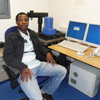
Amidou Dembele
UCD School of Chemical and Bioprocess Engineering
Started: January 2009
Fabrication of new polymer – titania materials for more efficient PV cells
In this project atmospheric pressure plasma deposition will be employed to co-deposit TiO2 nanoparticles and a standard semiconductor polymer as a novel technique to fabricate Hybrid PV cells. The plasma treatment may render the deposition phase more reactive to produce a continuous TiO2 and polymer phase and thus improving the cell efficiency.
www.ucd.ie/surfaces/projects_photovoltaic_coatings.htm
....................................................................................................................................................................................
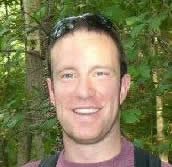
Stephen Sheehan
UCD School of Chemical and Bioprocess Engineering
Started: January 2011
Enhancing the performance of DSSC through FTO coatings and addressing sealing issues
My research is focussed on DSSC but more specifically transparent conducting oxide layers. One of the main aims of this research is to assess the possibility of depositing a thin layer of FTO on both glass and flexible substrates. The performance of the coated substrates will be assessed in relation to DSSC efficiency. The other main area of interest will focus on addressing the current sealing issues seen in DSSC.
....................................................................................................................................................................................
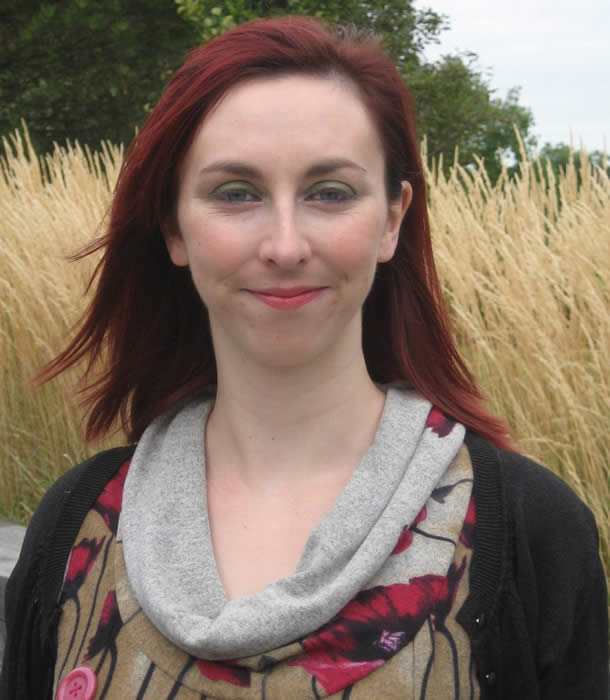
Laura Tobin
UCD School of Electrical, Electronic and Mechanical Engineering
Started: October 2008
Opto-Electrical Properties of PV Cells
I am developing a standard calibration rig for all cells generated in the team. I will test and characterise the electrical and opto-electronic performance of each photovoltaic (PV) cell in a standard and reproducible manner. I am developing phenomenological models capable of quantitatively describing the behaviour as a function of bulk parameters related to the material composition and structure of the cells.
....................................................................................................................................................................................
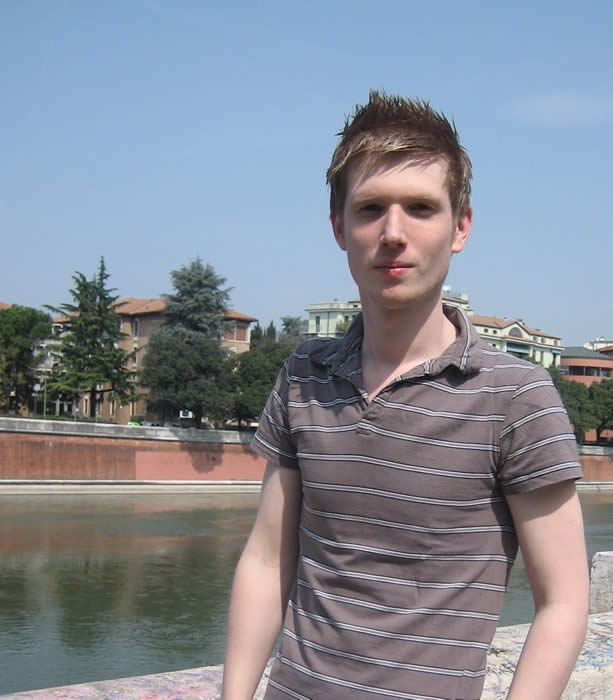
Ciaran Lyons
UCD School of Chemical and Bioprocess Engineering
Started: September 2009
The Synthesis of Organic Dyes for Dye Sensitised Solar Cells
I am synthesising organic dyes with the aim of producing dyes that are stable in a solar cells and which also have high energy conversion efficiency values. My dyes are tested by my colleagues in the University of Limerick.
....................................................................................................................................................................................
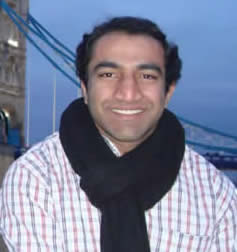
Mukund Ghavre
School of Chemical Sciences, Dublin City University
Started: April 2011
Synthesis and applications of chiral ionic liquids
Ionic liquids have been defined as ionic compounds that melt below 100 °C. Their properties, for instance, low vapour pressure, high viscosity, nonflammability, thermal stability and high ionic conductivity have led researchers to investigate them as electrolytes in dye sensitized solar cells (DSSC).
Our project goal is the applications of low toxicity and readily biodegradable ‘Chiral ILs’ in DSSC. Consideration of biodegradability and toxicity are important aspects of ‘Green Chemistry’ hence the use of these ILs is of great importance.
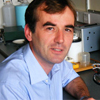
Thomas O’Reilly
UCD School of Physics
January 2008- January 2011
Spectroscopy and Efficacy of Novel Dye Sensitised Grätzel Cells
Work with school of chemistry to test novel dyes and incorporate these in to Grätzel Cells as sensitising dyes. Develop manufacturing of DSSCs on site and automated test equipment for spectroscopic analysis and characterisation.
....................................................................................................................................................................................
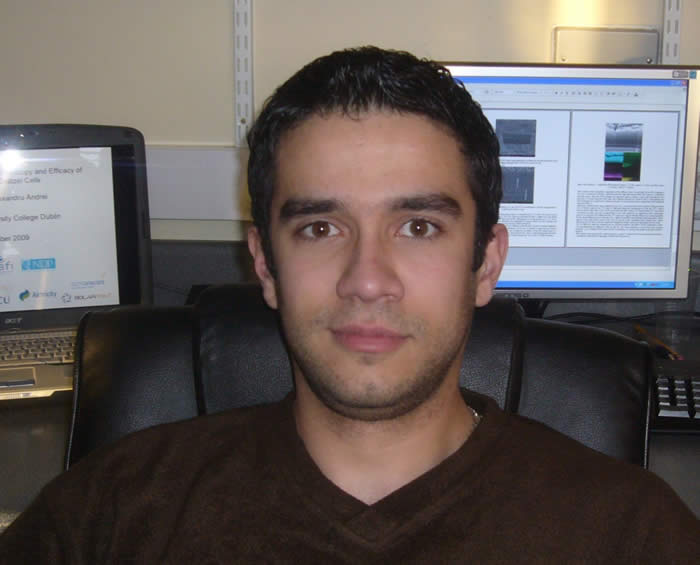
Codrin Andrei
UCD School of Physics
Started: October 2009
Spectroscopy and Efficacy of Novel Dye Sensitised Grätzel Cells
The project is focused on the nano scale fabrication and characterization of novel DSSC materials and nanostructures for high efficiency light harvesting, using techniques emerging from bio-inspired nanotechnology. The aims of the project are: the investigation of the main physical mechanisms in a DSSC (i.e. electron generation, injection, transport and temporal response mechanism) and the development of nano architectures with desired photonic properties (i.e. efficient photo-response materials - photon absorbing antennas) with the final goal of creating novel cost-effective and lifetime-effective technology and transferring it from research to knowledge economy.

Neelima Rathi
MSSI, University of Limerick
Started: May 2009
Electrochemical and Spectroscopic Characterisation of Novel Dye Sensitized Gratzel Cells
The main objective of this project is to characterise the electrochemical and spectroscopic properties of dye sensitised solar cells.
This work will be performed using standard electrochemical techniques, cyclic voltammetry, chronoamperometry and rotating disc voltammetry. In addition to determining the redox potentials and the rate constants for heterogeneous electron transfer of the adsorbed dyes in a range of solvents, the long term stability of the dyes will be examined in both oxidation states and in the excited state. In-situ spectroscopic studies will be performed using a thin layer spectroelectrochemical cell to determine the redox properties of the excited states of the dyes. Characterisation of the surface bound dyes will be performed using confocal resonance Raman and XPS.

Ajay Singh
MSSI, University of Limerick
Started: September 2008
Directed Vertical Assembly of II-VI Semiconductor Nanorods of Low-cost Solution Processable Solar Cells
The aim of this project is to fabricate low-cost solar cells using solution processable II-VI wide band gap vertically aligned semiconductor nanorods. The directed vertical assembly of nanorods will minimize the carrier transport paths which will increase the efficiency of nanorods solar-cells.
www.ifnano.com

Saurabh Agrawal
UCD School of Chemical and Bioprocess Engineering
Started: September 2008
Molecular and Electronic Modelling of dye-Sensitised and Semiconductor Nanorod PV Cells
The Dye Sensitized Solar Cell (DSSC) or Grätzel Cell is well established for conversion of photon energy into electronic energy. The DSSC is composed of three components: dye, semiconductor and electrolyte. We are focused on the simulation studies of the different groups of dyes to enhance the performance of the DSSC.

Jennifer O’Reilly
UCD School of Physics
Started: April 2009
Imaging and Spectroscopy of Novel Nanomaterial Photovoltaic Cells
The focus of the project is to investigate the use of novel nanomaterials in a photovoltaic cell via imaging and spectroscopic techniques. Nanomaterials of interest include core-shell quantum dots of a lead and zinc chalcogenide mixture, and cadmium selenide nanorods. Microscopic imaging techniques include: AFM, PEEM, and SNOM.
www.ucd.ie/biophysics

Binh (Ben) H. Q. Dang
UCD School of Chemical & Bioprocess Engineering
Started: September 2009
Development of visible-light-active titanium dioxide coatings for the application of hydrogen production by photoelectrochemical water splitting method
This work is targeted at improving the photoactivity of the Honda/Fujishima effect through tailoring the surface and bulk structure of the TiO2 photocatalyst electrode, as well as through doping it with various targets (C, N, W, Fe) in a homogeneous and graded pattern.
www.ucd.ie/surfaces

Elaine Neville
UCD School of Chemistry and Chemical Biology
Started: September 2008
Sol-gel synthesis and characterisation of photo-electrochemical activity of doped TiO2
Doped TiO2 materials have band gaps that are reported to be lower than TiO2 and as such they can utilize visible light to initiate photocatalysis at wavelengths at which TiO2 cannot operate. The purpose of this work is to synthesise series of doped TiO2 with the ultimate goal of finding catalysts to promote the photo-assisted water splitting reaction.

Ritwik Kavathekar
UCD School of Chemical and Bioprocess Engineering
Started: September 2008
Atomistic and quantum simulation of thin metal oxide films
Photoactive metal-oxide semiconductors, such as titania, are capable of catalyzing various chemical reactions, including water-splitting. Such reactions are dependent on excitation energetics, surface defects and morphology of crystals/thin-films. Molecular modeling of the band structure and surface defects in contact with water via dynamics and electron transport enables us to understand this process. Classical Modelling Dynamics provides snapshots of the events for adsorption process, while quantum chemical calculations provides insight into electron-hole pair transfer processes.
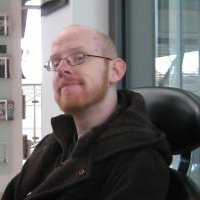
Paul H.D. Gorman
UCD School of Chemical and Bioprocess Engineering
Started: January 2011
Computational Modelling and Analysis of Hydrogen in Clathrate Hydrates
My research involves the computational study of SI, SII, and SH hydrates with various guest molecules towards the goal of an efficient, reusable large scale hydrogen storage medium.
........................................................................................................................................................................................................
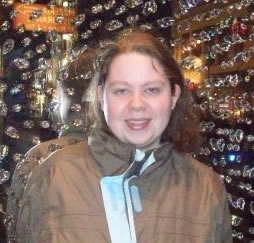
Crystal O'Connor
UCD School of Chemistry and Chemical Biology
Started: May 2011
Hydrogen Storage Catalysis
The emerging field of hydrogen storage offers an unprecedented opportunity to perform research critical to solving society’s demands for energy. Specifically, I am working on a highly efficient method for liberating dihydrogen from ammonia borane using homogeneous catalytic complexes.
.........................................................................................................................................................................................................
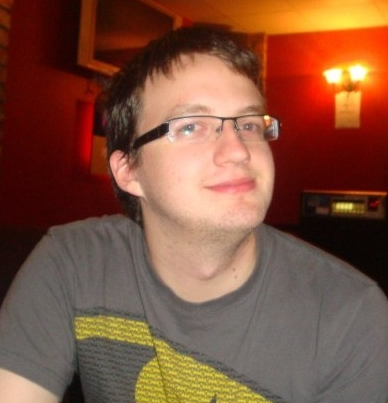
Rory Herron
UCD School of Chemistry and Chemical Biology
Started: May 2011
Hydrogen Release Catalysis
In tandem with the work on hydrogen storage, studies on the release of hydrogen will offer the potential for the safe and economical transport of H2 – allowing its use as a transportation fuel and removing a significant obstacle to the development of fuel cell-powered vehicles. My project will involve nano-composite material synthesis (using inorganic chemistry techniques), characterisation (using electron microscopy, surface analysis and spectroscopy) and application (as H2 release and H2 capture mediating agents). I will design and construct an apparatus for the study of the hydrogenation of dehydrogenated amino-borane slurries using H2, and both molecularly tethered and oxide catalysts.

Aljoscha Wild
UCD Conway Institute, School of Biomolecular and Biomedical Science
Started: September 2008
Carbon dioxide fixation on metal scaffolds
In this project we intend to investigate the feasibility of fixing carbon dioxide in aqueous solution and forming useful fuels or feedstocks. We will screen a range of substrates and catalysts for their ability to fix carbon dioxide. 13C-NMR and 13C-enriched carbon dioxide will be used to follow the reactions of carbon dioxide in aqueous media. We will adopt a biomimetic approach and so hope to draw inspiration from nature’s catalysts and also to use a wide range of biomolecules as substrates.

Kevin Fennell
UCD School of Chemistry and Chemical Biology
Started: September 2008
Azacrypt Trapping of Carbon Dioxide for Chemical Reduction
The aim of my project is to synthesise polyamino cryptates for coordination of pairs of metal ions. Systems like these are known to spontaneously take up atmospheric CO2 as bridging carbonate in protic solvents and we will explore the potential of the bound carbonate towards further reaction to make fine chemicals.
............................................................................................................................................................................................
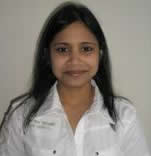
Mooneerah Heerah Booluck
UCD School of Chemistry and Chemical Biology
Started: September 2010
Uptake and Activation of Carbon Dioxide by Macrocyclic and Macrobicyclic Complexes
CO2 fixation and transformation by metal complexes is increasingly investigated from the perspective that it is a valuable carbon resource and an environmental concern. Our approach to this challenge is to develop the ability of some dinuclear cryptates and macrocycles to fix aerial CO2 as bridging carbonate (in wet solvents) and to explore the reduction chemistry of such carbonato-bridged systems towards further reactions to make fine chemicals.

Morad El-Hendawy
UCD School of Chemical and Bioprocess Engineering
Started: July 2009
Computational Analysis of The Active Site Of Rubisco And Synthetic Analogues
The main project interests with creation bio-inspired catalysts for fixation and reaction of CO2 which mimic the function of natural photosynthetic enzyme, Rubisco. My role here is doing computational analysis of the active site of Rubisco and synthetic analogues. To achieve this classical and hybrid classical/quantum (QM/MM) simulations on the active site of Rubisco and synthetic analogues will be carried out.
www.ucd.ie/chembioeng/research/materialsmolecularsimulation
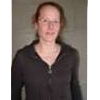
Wiebke Reimann
MSSI, University of Limerick
Started: September 2008
Mesoporous solids for low temperature carbon dioxide adsorption
This project is investigating alternative routes to capture and storage of CO2 at ambient conditions. We are developing a range of solid adsorbents capable of adsorbing CO2 from a gaseous stream at low temperatures, including silica and aluminium based high surface area porous solids modified with amine groups. Physical properties such as porosity and surface chemistry will be tailored to optimise the adsorbing capacity of the materials.

Muhammad Awais
UCD School of Electrical, Electronic and Mechanical Engineering
February 2008 - April 2011
Fabrication of NiO coatings for the photocatalytic reduction of CO2
This project is focused on the production of nickel oxide (NiO) coatings by magnetron sputtering and novel powder coating processing technique. NiO coatings will be sensitized with the dye for the photocatalytic reduction of CO2 to products such as methanol, formic acid and CO. The challenge is to develop p-type NiO coatings with high dye adsorbing capability to enhance the efficiency of light driven reduction of CO2.
www.ucd.ie/surfaces
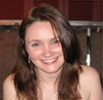
Nadia Coburn
School of Chemical Sciences, Dublin City University
Started: December 2007 - September 2010
Development of Inorganic Dyes for Photocatalytic CO2 Reduction
My research entails organic/inorganic synthesis and characterisation to develop novel dyes containing a light absorbing species and a catalytic centre connected by a bridging ligand. These dyes are then analysed by GC and IC as potential catalysts for CO2 reduction without the use of a sacrificial agent.
Link to the H.Vos research group: http://www.dcu.ie/chemistry/biographies/han_vos_b.shtml
.............................................................................................................................................................................................................
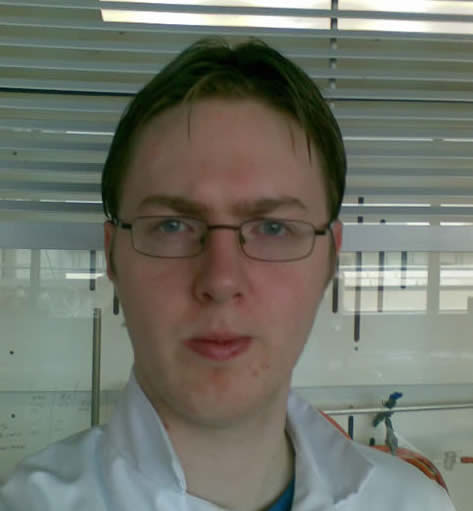
Declan Traynor
School of Chemical Sciences, Dublin City University
Started: October 2009
Light driven organo-cobalt catalysts for solar carbon dioxide reduction
My research involves the synthesis of organic dyes and coupling them with cobalt catalytic centres which are then characterised. The compounds activity as a catalyst is analysed by GC and IC, the products of major interest are small organic molecules such as formate and oxalate.
..............................................................................................................................................................................................................

Kevin McDonnell Research Associate
UCD School of Electrical, Electronic and Mechanical Engineering
January-December 2010
My research work includes Low pressure plasma sputtering and surface characteristaion techniques with application into research projects across the three strands in conjunction with Amidou, Mahfujur, Ben and Awais
www.ucd.ie/surfaces